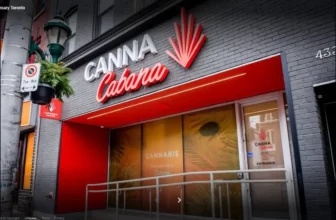Ingestible cannabis products deemed noncompliant with federal regulations by Health Canada are yet widely available in certain regions, almost a year since the regulator asked companies to stop selling them due to concerns about excessive THC consumption. This poses a major challenge for producers who strive to maintain regulatory compliance, as it becomes increasingly difficult to determine which products are permissible and which are not. At a time when financial struggles plague the industry, companies are becoming more willing to take risks. Experts claim that the continued presence of such products in the market can be attributed to several factors, including the unclear distinction between “edibles” and “extracts.”
As no judicial ruling clarifies this matter, the chaos within the ingestibles market will likely persist, leaving companies unsure about the boundaries separating edibles and extracts.
Extracts allowed significantly higher THC content than edibles
Ingestible cannabis products considered extracts are permitted to have 100 times greater amounts of THC per package compared to those categorized as edibles – potentially containing up to 1,000 milligrams per container. Such “edible extracts” gained popularity among consumers but were also seen as a public health risk due to their considerably higher THC content. Health Canada requested at least five firms, including Organigram Holdings from New Brunswick and Aurora Cannabis based in Alberta, to cease distribution and sales of these products. However, Ontario Cannabis Store (OCS), serving as the province’s monopoly wholesaler and online retailer, recently dedicated an entire webpage particularly to “Ingestible Cannabis Extracts,” even listing one product as an “edible extract infused with 100mg of rapid-onset THC.”
This blurs the line between edibles and extracts as OCS labeled these products as extracts, allowing each package to contain more than 10 milligrams of THC. Some of their listed products even exceeded this limit.
Federal court ruling complicates matters further
In August, a federal court ruled that Health Canada breached its duty of procedural fairness when classifying a company’s THC-infused lozenges as “edible” cannabis instead of extract. As a result, the court directed Health Canada to reconsider its decision. However, the agency had not yet provided any new determination or a timeline by November. Organigram argues that Health Canada recognized the court’s decision and deemed its former classification invalid – although this only applies to Organigram’s Jolts products and does not revive the market for all ingestible extracts. In response to queries about potentially noncompliant companies marketing items as extracts rather than edibles, Health Canada declined to offer specific figures. Still, it said they are working with license holders to resolve such problems.
Provincial wholesalers struggle to differentiate between extracts and edibles
Provincial cannabis wholesalers grapple with confusing product classifications amid unclear regulations on how to distinguish between extracts and edibles. Although Health Canada claims not to approve cannabis items before their sale or marketing, Cannabis NB, the province-owned wholesaler in New Brunswick, insists that Health Canada approves all cannabis products from licensed producers before allowing them into the market.
The presence of such discrepancies in classification and regulation is bound to increase uncertainty around the selling and consumption of ingestible cannabis products.
Will clearer guidelines emerge soon?
No concrete action has been taken to provide better guidance or clarification regarding the difference between edibles and extracts. Both cannabis producers and consumers remain in a state of uncertainty, with industry players unsure about how to navigate the issue without violating regulations. Considering the ongoing struggles within the Canadian cannabis sector, it is crucial for stakeholders, including regulatory authorities, to make concerted efforts toward providing more precise guidelines to ensure consumer safety and success for businesses.
Until then, the turmoil in the ingestibles market will persist, leaving cannabis companies to walk a fine line between compliance and risk-taking amidst financial hardship.





